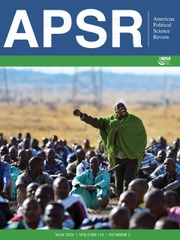Article contents
The Supreme Court as an Agent of Policy Drift: The Case of the NLRA
Published online by Cambridge University Press: 29 July 2022
Abstract
Scholars have made important advances in explaining policy drift, uncovering the prevalence of drift in veto-riddled systems, the importance of bureaucratic discretion and statutory ambiguity in combatting drift, and its feedback effects. Despite research demonstrating the potential for judicial action to alleviate drift, we know little about the potential for the Supreme Court to facilitate policy drift. I argue that the Supreme Court may operate as a powerful agent of drift by stripping statutes of ambiguity, foreclosing policy innovation in institutions outside of Congress, and curtailing bureaucratic discretion and authority. To demonstrate these mechanisms, I show how in the case of federal labor law, the Court’s jurisprudence addressing the right to strike, federal preemption, and National Labor Relations Board authority played a central role in gradually undoing the efficacy of The National Labor Relations Act. This inquiry has important implications for understanding public policy, judicial power, the development of American labor law, and American democracy.
- Type
- Research Article
- Information
- Copyright
- © The Author(s), 2022. Published by Cambridge University Press on behalf of the American Political Science Association
References
REFERENCES
- 5
- Cited by



Comments
No Comments have been published for this article.